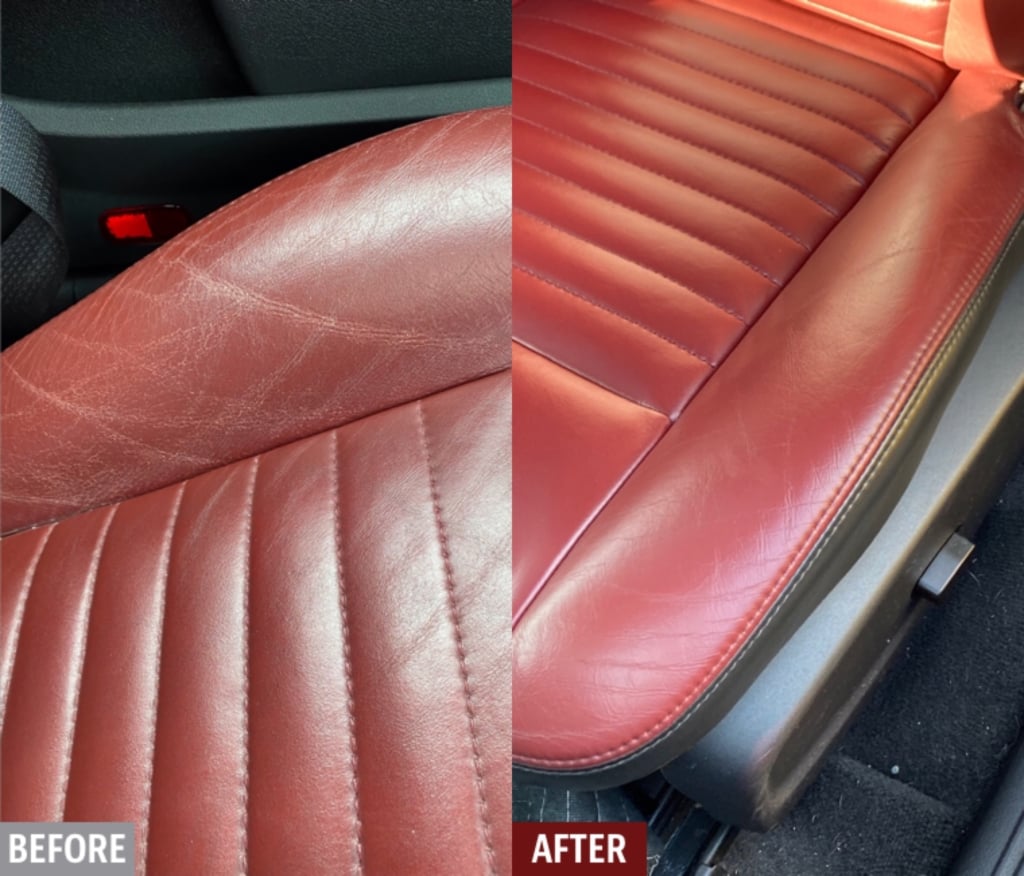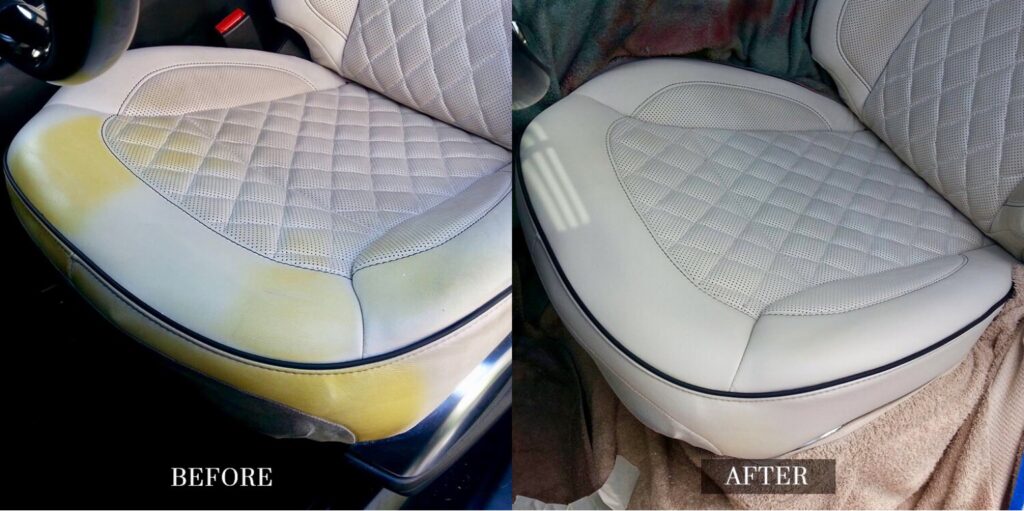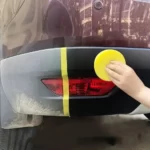Is your car seat looking worn out? Restore its beauty with our professional car seat restoration services.
Table of Contents
ToggleWe specialize in renewing and refreshing car seats to give them a fresh, like-new appearance. Our expert team utilizes high-quality materials and precise techniques to revitalize your car’s interior, providing a cost-effective alternative to replacement. Whether your seats have stains, rips, or faded color, we can breathe new life into them, enhancing the overall look and feel of your vehicle.
With our car seat restoration services, you can enjoy a comfortable and stylish interior while prolonging the life of your car seats. Say goodbye to worn-out seats and hello to a rejuvenated, attractive interior with our restoration solutions.

Credit: www.fibrenew.com
The History Of Car Seat Restoration
Welcome to our blog series on car seat restoration! In this article, we’ll be diving into the captivating history of restoring car seats to their former glory. From the origins of car seat restoration to the evolution of restoration techniques, we’ll explore the fascinating journey it has taken over the years.
Origins Of Car Seat Restoration
The origins of car seat restoration can be traced back to the early days of the automobile industry. As cars became more affordable and accessible to the general public, car seat materials also underwent significant changes.
In the early days, car seats were primarily made from leather or fabric, which often wore out quickly due to frequent use and exposure to the elements. As a result, car owners were faced with the need to restore their car seats to their original condition.
Initially, car seat restoration involved simple repairs, such as patching up torn fabrics or applying leather conditioners to bring back the seats’ luster. These early restoration techniques allowed car owners to maintain the appearance and functionality of their car seats without the need for costly replacements.
Evolution Of Car Seat Restoration Techniques
Over time, as technology advanced, so did the techniques used in car seat restoration. With the advent of advanced materials and innovative methods, car seat restoration transformed into a highly specialized craft.
One of the major breakthroughs in car seat restoration came with the introduction of upholstery repair and refinishing. Skilled craftsmen began utilizing techniques such as steam cleaning, stain removal, and color matching, enabling them to restore car seats to their original or even better condition.
In recent decades, the availability of a wide range of restoration products has further revolutionized the field. These products include specialized cleaners, dyes, and protectants designed explicitly for car seat restoration. Combined with advanced techniques and technologies, these products allow restoration professionals to achieve remarkable results.
Today, car seat restoration has become an art form, with dedicated providers offering a range of services to address various seat materials, including leather, fabric, and vinyl. Whether it’s repairing tears, replacing foam, or refinishing worn-out surfaces, these experts can breathe new life into car seats, enhancing both their visual appeal and comfort.
As car seat restoration continues to evolve, so do the techniques and materials used, ensuring that car owners can enjoy their rides in style and comfort for years to come.
Common Issues With Car Seats
Car seats endure a lot of wear and tear, leading to various issues that can affect their appearance and functionality. Understanding these common problems is essential for effective car seat restoration and maintenance. Let’s explore some of the most prevalent issues.
Wear And Tear
Over time, car seats can exhibit signs of wear and tear, such as fading, cracking, and sagging. Continuous use, exposure to sunlight, and friction from passengers contribute to these issues. The fabric and cushioning may deteriorate, affecting the comfort and visual appeal of the seats.
Stains And Spills
Accidental spills and stains are common occurrences in cars, leading to unsightly marks on the seats. Liquid spills, food residue, and dirt can all create stubborn stains that are challenging to remove. Additionally, these spills can cause unpleasant odors if not addressed promptly and effectively.
The Process Of Restoring Car Seats
Restoring car seats can breathe new life into your vehicle’s interior. The process of restoring car seats involves several steps, including an assessment of the seats, cleaning, and repair techniques. By following these steps, you can revitalize your car seats and enhance the overall look and feel of your vehicle’s interior.
Assessment Of The Seats
Before beginning the restoration process, it’s essential to assess the condition of the car seats. Look for signs of wear, such as tears, rips, stains, and general wear and tear. Assess the material of the seats, whether it’s leather, fabric, or vinyl, as this will help determine the appropriate cleaning and repair techniques.
Cleaning And Repair Techniques
Once the assessment is complete, it’s time to employ cleaning and repair techniques to restore the car seats. This may involve using specialized cleaning products and tools to remove stains and dirt. Additionally, repairing tears and rips may require sewing or patching the affected areas. Depending on the material of the seats, different techniques will be utilized to ensure a thorough restoration process.
Tools And Materials For Car Seat Restoration
Car seat restoration requires the right tools and materials to ensure a successful outcome. Whether you have a vintage car with worn-out seats or simply want to refresh the look of your current seats, using the appropriate cleaning products, repair materials, and equipment can make all the difference. Let’s explore the essential tools and materials you’ll need for an effective car seat restoration process.
Types Of Cleaning Products
When it comes to cleaning car seats, using the right products is crucial to remove dirt, grime, and stains effectively. Here are the types of cleaning products you’ll need:
- Upholstery cleaner: Choose a high-quality upholstery cleaner specifically designed for car seats. These cleaners are formulated to penetrate deep into the fabric and lift away dirt and stains without causing any damage.
- Stain remover: For stubborn stains or discoloration, a stain remover can be a handy tool. Look for a stain remover that is safe to use on different types of car seat materials and has a proven track record of effectively removing tough stains.
- Fabric deodorizer: Over time, car seats can absorb unpleasant odors. To eliminate odors and leave your seats smelling fresh, pick a fabric deodorizer specifically designed for car upholstery.
- Microfiber cloth: A soft microfiber cloth is essential for gently wiping the seats and removing excess cleaning product or dirt. Microfiber is non-abrasive and won’t leave scratches on the surface of the seats.
Repair Materials And Equipment
If your car seats are damaged or worn out, repair materials and equipment can help you restore them to their former glory. Here are some essential items:
- Vinyl or leather repair kit: Depending on the material of your car seats, you’ll need a repair kit designed specifically for vinyl or leather. These kits usually include patches, adhesive, and color-matching compounds to repair cracks, tears, or other damages.
- Foam padding: If your seats have lost their shape or padding, adding new foam padding can restore their comfort and support. Look for high-density foam padding that is durable and resistant to compression.
- Needle and thread: For minor repairs such as stitching up small tears or reattaching loose upholstery, having a needle and thread handy can save you time and money.
- Heat gun or hairdryer: When working with vinyl or leather, a heat gun or hairdryer can be useful to soften the material and make it more pliable, allowing for easier repairs or reshaping.
- Trim removal tools: If you need to remove the seat covers or access the internal components of the seats, having trim removal tools can prevent damage and make the process smoother.
By having the right tools and materials at your disposal, you’ll be well-equipped to tackle the car seat restoration process with confidence. Whether it’s cleaning away years of dirt or repairing damages, the effort invested will pay off when your car seats regain their original beauty and comfort.
Benefits Of Car Seat Restoration
Car seat restoration offers various benefits, including cost-effectiveness and enhanced aesthetics and comfort. By considering a thorough restoration process, you can enjoy the advantages it brings to your car seats.
Cost-effectiveness
Restoring your car seats can be a cost-effective solution compared to buying brand new seats. Instead of spending a significant amount of money on replacement seats, opting for restoration can save you money in the long run. With proper restoration techniques, your car seats can regain their original functionality and appearance, extending their lifespan.
Enhanced Aesthetics And Comfort
Restoring car seats not only improves their appearance but also enhances the overall aesthetics of your vehicle’s interior. Whether your car seats have worn-out upholstery, faded colors, or unsightly stains, restoration can bring them back to life. By repairing or replacing damaged materials, such as the upholstery or foam padding, your car seats can look almost brand new.
In addition to aesthetics, car seat restoration also ensures maximum comfort during your drives. Over time, the foam padding in car seats can become compressed and lose its cushioning effect. Through restoration, the foam can be replaced, providing optimum comfort to support your body while driving. Restoring the support system of car seats can also help alleviate back pain and discomfort during long journeys.
In summary, car seat restoration offers cost-effectiveness and enhances the aesthetics and comfort of your vehicle. Through the restoration process, you can save money, revitalize worn-out seats, and enjoy a more comfortable driving experience.
Credit: www.smartchoicerepaircenter.com
Frequently Asked Questions For Car Seat Restoration
FAQ 1: How Often Should Car Seats Be Restored?
Car seats should be restored every 2-3 years or as needed to maintain their condition and functionality.
FAQ 2: Can Car Seat Restoration Increase The Value Of My Vehicle?
Yes, car seat restoration can enhance the overall appearance and condition of your vehicle, leading to a potential increase in its value.
FAQ 3: What Are The Benefits Of Car Seat Restoration?
Car seat restoration not only revitalizes the look of your seats but also improves comfort, durability, and extends their lifespan.
FAQ 4: How Long Does The Car Seat Restoration Process Take?
The duration of the car seat restoration process depends on the extent of damage and the specific services required, but it typically takes a few days to complete.
Conclusion
Car seat restoration is a practical and cost-effective solution for reviving worn-out upholstery and prolonging the lifespan of your vehicle. By implementing professional techniques and quality materials, you can restore the comfort and beauty of your car seats, enhancing both the aesthetics and resale value of your vehicle.
Don’t let stained or damaged seats diminish your driving experience – consider car seat restoration today.




One Comment